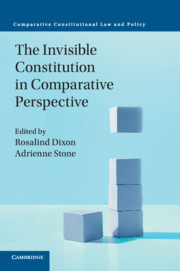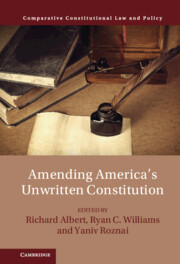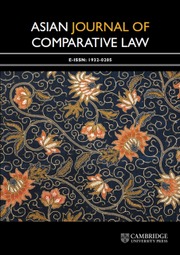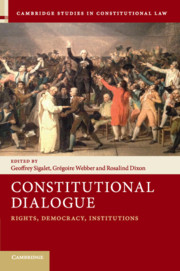The Invisible Constitution in Comparative Perspective
Constitutions worldwide inevitably have 'invisible' features: they have silences and lacunae, unwritten or conventional underpinnings, and social and political dimensions not apparent to certain observers. The Invisible Constitution in Comparative Perspective helps us understand these dimensions to contemporary constitutions, and their role in the interpretation, legitimacy and stability of different constitutional systems. This volume provides a nuanced theoretical discussion of the idea of 'invisibility' in a constitutional context, and its relationship to more traditional understandings of written versus unwritten constitutionalism. Containing a rich array of case studies, including discussions of constitutional practice in Australia, Canada, China, Germany, Hong Kong, Israel, Italy, Indonesia, Ireland and Malaysia, this book will look at how this aspect of 'invisible constitutions' is manifested across different jurisdictions.
- The first book to adopt a book-length comparative focus on invisible or unwritten constitutionalism
- Offers rich theoretical insights and detailed country case studies
- Contributes to a more theoretical and context-sensitive approach in comparative constitutional studies
Reviews & endorsements
‘The invisible constitution, the small-c constitution, extraconstitutional rules, conventions and norms - these and similar ideas occupy a large space in contemporary thinking about constitutions. The essays in this collection wrestle with these protean concepts, using tools from legal theory, political science, and sociology. The concepts may remain elusive after one reads the essays, but the reader will undoubtedly have a better and more sophisticated grasp on their possible meaning.' Mark Tushnet, William Nelson Cromwell Professor of Law, Harvard Law School, Massachusetts
‘Dixon and Stone have assembled a world-class group to investigate a subject of deep importance to all scholars of public law. Unseen but neither unknown nor uncontested, the invisible constitution raises serious challenges for constitutional design, constitutional interpretation and constitutional change. This volume addresses each of these and more, and does so with rich comparative perspectives that leave the reader asking foundational questions about the nature of higher law, the limits of codification, and the necessary and sufficient conditions for constitutionalism - the mark of an outstanding study in public law.' Richard Albert, University of Texas, Austin
Product details
November 2018Hardback
9781108417570
592 pages
235 × 156 × 35 mm
0.97kg
1 b/w illus. 1 table
Available
Table of Contents
- Introduction: the invisible constitution in comparative perspective Rosalind Dixon and Adrienne Stone
- 1. Soundings and silences Laurence H. Tribe
- 2. The Indonesian constitutional court: implying rights from the 'rule of law' Simon Butt
- 3. The evolution of natural law in Ireland Eoin Carolan
- 4. Behind the text of the basic law: some constitutional fundamentals Johannes M. M. Chan
- 5. The constitutional orders of 'One Country, Two Systems': a comparative study of the visible and invisible bases of constitutional review and proportionality analysis in the Chinese special administrative regions of Hong Kong and Macau Albert H. Y. Chen and P. Y. Lo
- 6. Constitutional implications in Australia: explaining the structure-rights dualism Rosalind Dixon and Gabrielle Appleby
- 7. The implicit and the implied in a written constitution Jeffrey Goldsworthy
- 8. Interim constitutions and the invisible constitution Caitlin Goss
- 9. Germany's German constitution Russell A. Miller
- 10. The platonic conception of the Israeli constitution Iddo Porat
- 11. Unwritten constitutional principles in Canada: genuine or strategic? David Schneiderman
- 12. Originalism and the invisible constitution Lawrence B. Solum
- 13. Malaysia's invisible constitution Yvonne Tew
- 14. Lost in transition: invisible constitutionalism in Hungary Gábor Attila Tóth
- 15. The centrality and diversity of the invisible constitution Patrick Emerton
- 16. Is the invisible constitution really invisible? Jongcheol Kim
- 17. 'Additive judgments': a way to make the invisible content of the Italian constitution visible Irene Spigno
- 18. The 'invisible constitution' seen realistically: visualising China's unitary system Zhai Han.




.jpg)

